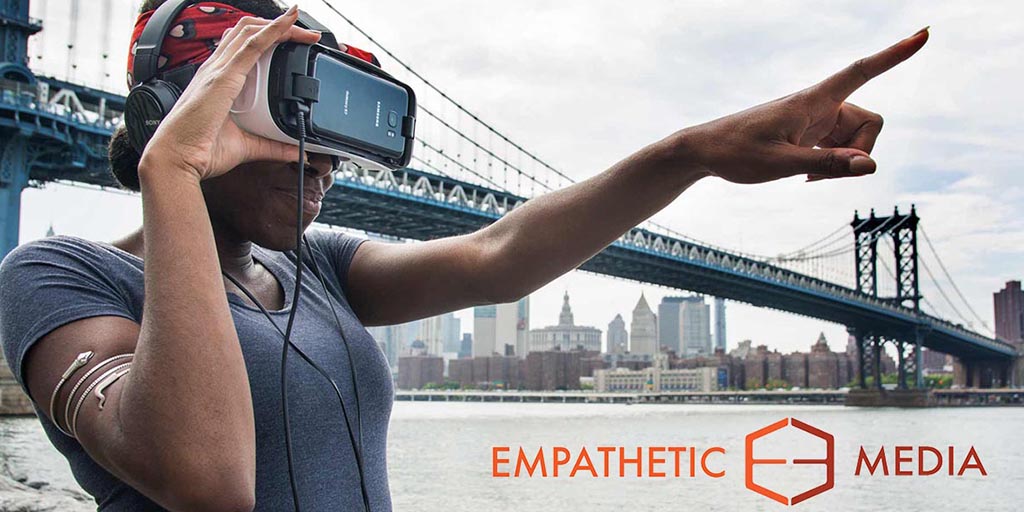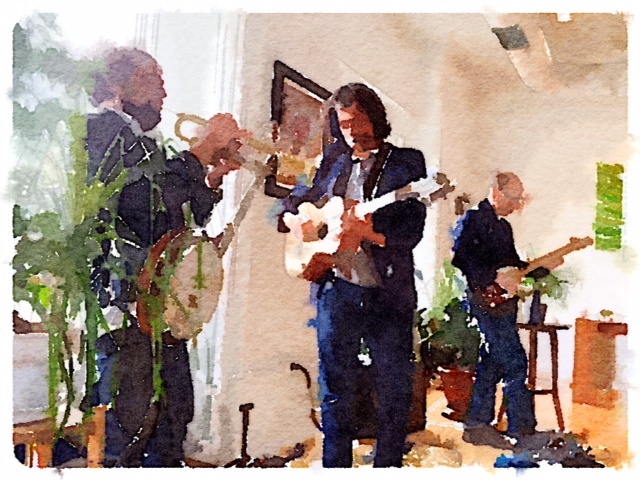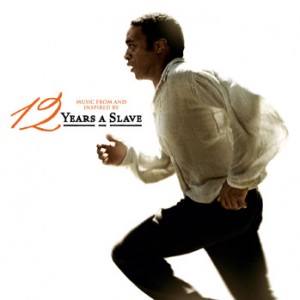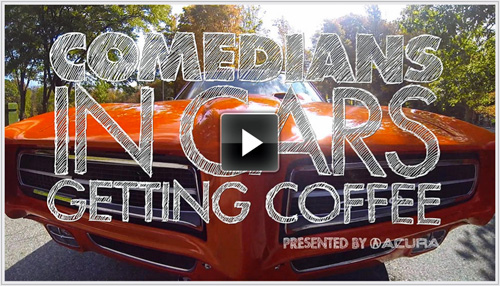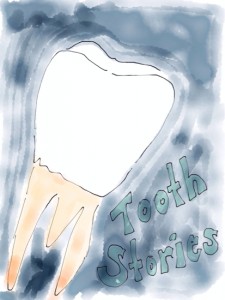
Persuasion and the Art of Storytelling (Image: Inc.com)
Persuasion is not just for salespeople and their prospects… Often the most effective persuaders are your kids. Somehow they come by it naturally while you, the adult, has to work hard to find the persuasive path to success. ~ Kevin Daum
Kevin Daum (@awesomeroar), the best-selling author of Video Marketing For Dummies , knows a thing or seven about persuasion. He believes that really persuasive people share seven behaviors that guarantee their success when performed together.
, knows a thing or seven about persuasion. He believes that really persuasive people share seven behaviors that guarantee their success when performed together.
Here are five of the behaviors that also lend themselves to the art of storytelling:
- Listen “You can’t persuade effectively if you don’t know the other side of the argument.”
- Connect “You’ll persuade people much more easily if they are open and aligned with your desires.”
- Acknowledge Credibility “When you are persuading people, reinforce their credibility on facts and opinions rather than dismissing them outright.”
- Offer Satisfaction “Give ground where you can and hold your ground only where it matters. Choose being successful over being right.”
- Know When to Shut Up “Wearing people down is not an effective strategy.”
[Adapted from Kevin Daum. “7 Things Really Persuasive People Do.” Inc. 5000. Aug 2, 2013]

Robert Dickman, author of The Elements of Persuasion helped bridge the story-persuasion divide in a Businessweek column by Marshall Goldsmith in August 2007.
helped bridge the story-persuasion divide in a Businessweek column by Marshall Goldsmith in August 2007.
a story is a fact wrapped in an emotion that compels an action which transforms our world… Take “All Gone.” We all told that one [as infants]. The fact was our bottle was empty. We wrapped that fact in an emotion—either annoyance because we wanted more, or satisfaction because we were full—and expressed it by crying or cooing. This compelled our parents to take an action—either getting another bottle or burping us and settling us down. Either way our world was changed. (“Storytelling and the Art of Persuasion“)
Despite my childfree choice and lifestyle, I’m a fan and student of children. (In fact, some would say that I’m still one myself!) As a lapsed teacher and a less lapsed uncle I’ve learned plenty from the most naturally persuasive storytellers in our midst. I suspect few would argue the fact that children, even infants, master the art of storytelling the moment they first lock eyes with an audience. Mom. Dad. Siblings.
The art of storytelling is initially almost the only weapon in our persuasion arsenal, so we polish it to perfection and maintain it meticulously without even realizing we are doing so. And we use it. Again and again. As son as we realize how effectively we can persuade (read “manipulate”) circumstances, we instinctively begin experimenting and honing our nascent art of storytelling.
The Art of Listening
While one mark of childish persuasion is the inability to listen, the stubborn insistence on shoving forward no matter how resolved and resistant the audience, savvy youngsters discover the art of listening early on.
People who know how to persuade… are actively listening when in persuasion mode. First, they are listening to assess how receptive you are to their point of view. Second, they are listening for your specific objections, which they know they’ll have to resolve. Last, they are listening for moments of agreement so they can capitalize on consensus. ~ Kevin Daum (7 Things Really Persuasive People Do)
I’ve argued elsewhere that the art of listening may be the most fundamental skill in effective storytelling. Children are the original A/B split testers, running different versions of their story past both parents (and any other relevant influencers) based upon their day-to-day assessment of their audience’s receptivity. Horse trading their way through a forest of objections and emphasizing the moments of agreement (no matter how few or stretched) are also early learned skills.
Create a Connection
Parents are impenetrable fortresses when the child is pushing a categorically unacceptable agenda. But parents will lower the drawbridge to negotiate when they detect overlapping objectives.
Really persuasive people… look for common ground to help establish emotional bonds and shared objectives. They show empathy for your position and make it known that they are on your side. ~ Kevin Daum (7 Things Really Persuasive People Do)
Whether you’re an ankle-biter or a seasoned film producer, the art of storytelling involves sidestepping antagonistic issues (at least initially) to forge a sympathetic dynamic between storyteller and audience. Once the drawbridge is down and you’re swapping pipe dreams and war stories on the grassy bank of the moat, watching ducks bobbing for snacks under bluebird skies, persuasive storytellers know that they stand a better chance of finding a receptive audience even to the “problem” issues.
Acknowledge Audience Credibility
Kids struggle with this. Heck, most adults struggle with this. Struggling to win over your audience by arguing the superiority of your experience, knowledge, facts, etc. mostly pisses people off. We all think we’re right. But this doesn’t stand in the way of persuasive storytellers.
When you are persuading people, reinforce their credibility on facts and opinions rather than dismissing them outright. Then they’ll be more likely to pay you equal respect in the exchange and be more open to the merits of your opposing view. ~ Kevin Daum (7 Things Really Persuasive People Do)
And if not, then you’re wasting your time. Move on!
Offer Satisfaction by Yielding

Kids struggle even more with this, perhaps because it’s tied to the previous issue. It’s about thinking big picture instead of getting tangled up in each element of your story. What’s the goal? Do you have to triumph at every turn to reach your goal? Usually not.
Smart persuaders know that they don’t have to win every little battle to win the war. They are more than willing to sacrifice when it helps the overall cause. They are ready to find the easiest path to yes. ~ Kevin Daum (7 Things Really Persuasive People Do)
Compromise along the journey, and you’ll earn the respect and trust of your audience, even though they may not share your views or goals. You are not trying to prove that you’re a genius. You just want to keep them hooked, curious, and sympathetic. By demonstrating that you may not be right about everything, you satisfy their need to object and resist. You demonstrate respect for their beliefs and needs. And you earn their confidence that you’re not trying to dupe them, just guide them toward a mutually meaningful conclusion.
Tell Your Story and then Shut Up
It goes without saying that one of the most pleasing rights of passage from youth to adulthood is learning this lesson. And one of the most aggravating forms of birth control is arguing with a kid who won’t shut up.
Successful persuaders get that you don’t win the battle by constantly berating people with an unending verbal barrage… They carefully support their arguments and check in with questions… [and then] they step back. ~ Kevin Daum (7 Things Really Persuasive People Do)
Frankly, this is my biggest shortcoming as a storyteller. I’m prone to blather on ad nauseum. Not good. Neither in written storytelling, nor in oral storytelling. I continue to work at this, but I’ve a long way to go. Which reminds me, it’s time to wrap up… I still have some growing up to do before I perfect the art of storytelling!
Postscript
You see, I’m not good at shutting up. But I’m working on it. I promise. I close with a hat tip and deep bow to Kevin Daum (@awesomeroar) whose article I’ve read and run through the food processor to suit my present needs. Sorry if I’ve distorted your opinions and processed your article into the digital equivalent of potted meat. And thanks for the inspiring road map and cogent argument. You, sir, are a persuasive storyteller!
Like this:
Like Loading...
